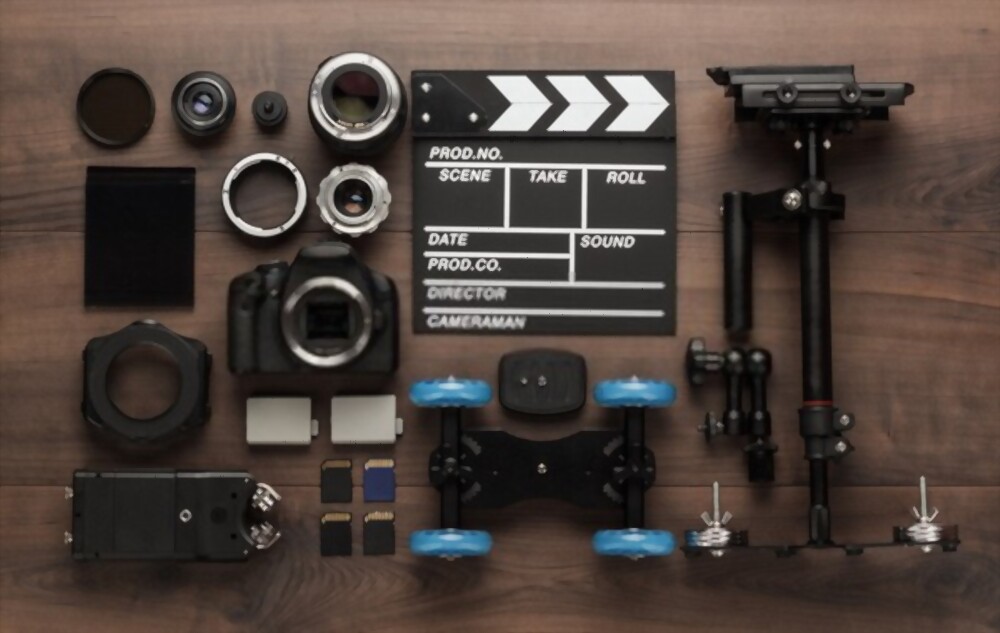It doesn’t matter if you want to create a video to advertise your products and services, or grow your social media following, you’ll need the right equipment to do the job properly. Filming a professional-grade video isn’t easy, but suitable gear can make it far less complicated.
Here’s the equipment you’ll need to produce professional video content:
Lighting
While you might expect a camera to be your most important purchase, the quality of your lighting will have a far greater impact on your video. In fact, many modern smartphones have high-end internal cameras that can produce stunning video, and when you combine them with professional lighting, you can create something nearly indistinguishable from footage shot on a $5,000 rig.
On the other hand, poor lighting can damage the final product of your video, often beyond repair. You lose a lot of detail in the scene if it isn’t properly lit, whether it’s too bright or too dark. Therefore, make sure you get it right before you press record — it’s much harder (and often impossible) to fix in editing.
While the specific kind of lighting you’ll need is beyond the scope of this post, a few high-powered, dimmable light sources with detachable umbrellas or diffusers is a great place to start, giving you options for exterior lighting, soft lighting, backlighting, and key lighting.
Microphones
A camera isn’t even the second most important part of your equipment set. Good quality microphones are tied for first place in terms of importance for a professional video shoot. In fact, many filmmakers argue that high-quality audio is even more important than good lighting — we rank them equally.
The type of microphone you choose will vary according to the video you create. In explainer video production, for example, you’ll benefit from a small, lavalier microphone that clips onto a subject’s shirt, right in front of their sternum. These tiny microphones are deceptively powerful and capture a subject’s voice with perfect clarity when placed appropriately.
Other alternatives include shotgun microphones and boom mics. Shotgun mics allow for the flexibility of a one-person crew and the benefit of picking up audio wherever you point the camera, whereas a boom mic can be held just out of frame, closer to your subjects. Just whatever you do, don’t rely on your camera’s onboard microphone — the results are typically nothing short of dismal.
Camera
Finally, we arrive at the camera, only the third most important part of your rig.
Chances are, you already have a smartphone capable of recording at 4K resolution, and that may be all you need. If not, you can pick up a serviceable mirrorless camera with some 4K capabilities for as little as $600 — a high-performing DSLR camera that shoots at even higher resolutions and framerates will cost closer to $3K.
When it comes to resolution, it’s still appropriate to shoot in 1080p (after all, most people will watch your videos on small mobile devices that don’t do 4K video justice anyway), but these days are quickly coming to an end. 4K is the way of the future, so spending a little extra might be worth it to future-proof your productions.
An action-based compact camera may also be appropriate, depending on the type of video you film. For instance, GoPro video cameras are suitable for filming sports like skiing or swimming.
Tripod/Gimbal
Shaky footage can be somewhat mitigated by standing still and using a camera with powerful in-body stabilization, but your best bet will be to use a tripod. You don’t need to splurge at this point either unless you’ll be panning and tilting the camera a lot during filming, in which case you’ll want a more expensive tripod with a smoother head.
If you’re on the move, consider mounting the camera to a gimbal (a handheld stabilizer). This ensures you keep the shot steady even as you walk and film.
While video editing software can use artificial intelligence to remove some shakiness, the results will never look as natural or smooth as if you had just used a tripod.
Video Editing Software
Video editing is one of the most critical parts of creating a film, so you must ensure you have the proper equipment to perform the task.
The top options for professionals and amateurs alike include Adobe Premiere Pro, Davinci Resolve, and Final Cut Pro. These are non-linear editing programs, which means that the edits you make are non-destructive to the original footage. So no matter how many edits you make, you can always restore the original and start from scratch if needed.
Consider Your Objectives When Purchasing Video Equipment
There are numerous makes and models of equipment you could use for creating videos, so many that it can be difficult to decide what you need. So when purchasing your equipment, carefully consider your goals and the type of videos you plan to make. That way, you’ll know what features to look for in your equipment.
